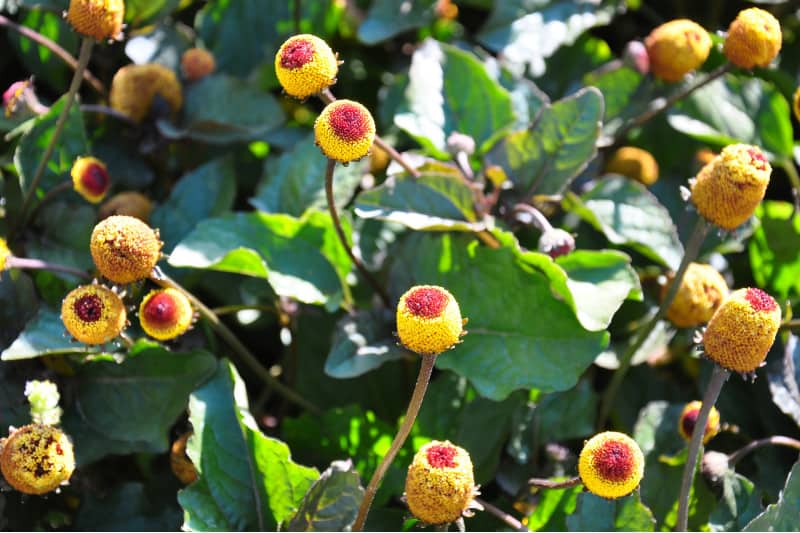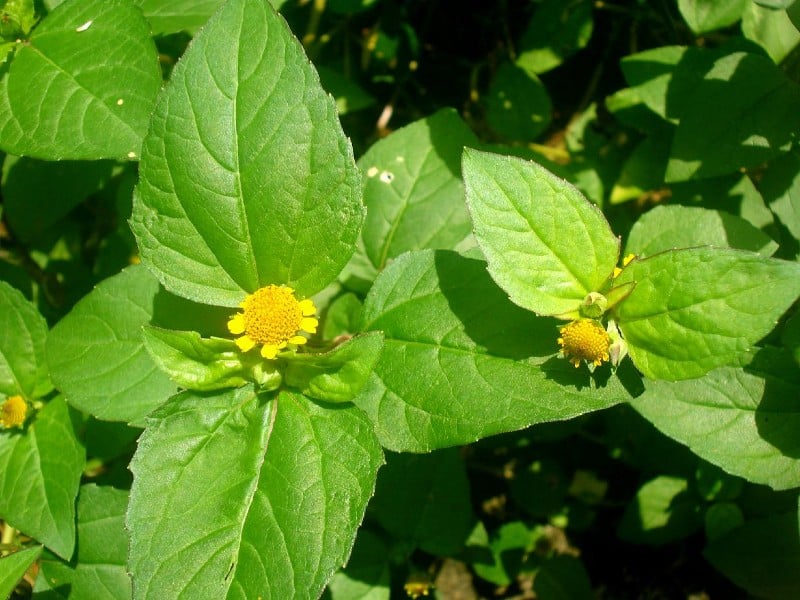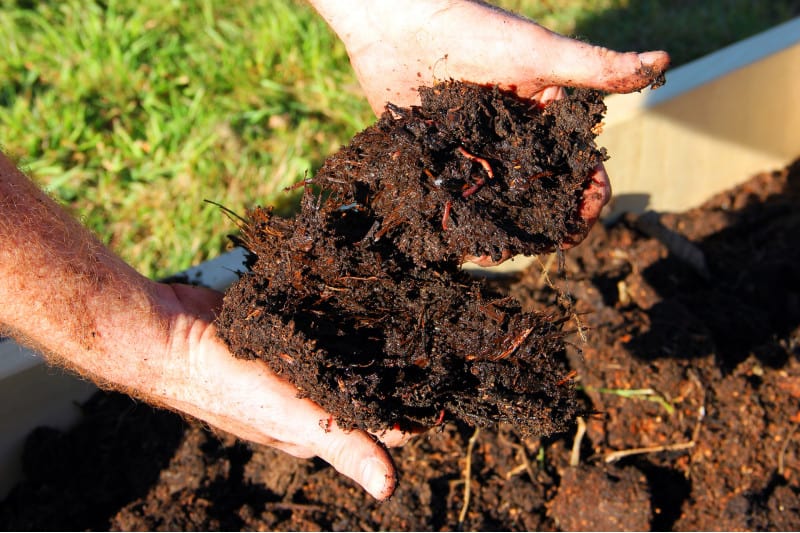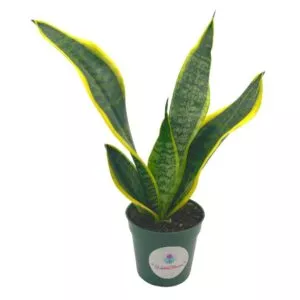No products in the cart.
The toothache plant has many benefits. The young, fresh leaves can be cooked like spinach or used as salad greens. Tiny amounts of chopped mint leaves can also give salads a particular flavor.
Another is that the fresh leaves are a good source of folic acid and vitamin C and are mineral-rich.
I know this sounds funny, but as its name implies, the Toothache plant is used to relieve toothache pain. Yes! It produces a numbing effect on the mouth when chewed.
The plant’s principal active component, Spilanthol, is responsible for its local anesthetic action. Hence the scientific name Spilanthes acmella oleracea.
Now let’s move on to its physical appearance. The Toothache plant is a sprawling, multi-branched plant with ovate, olive-green to purple-flushed leaves.
It also has tiny flowers on cone-shaped, yellowish-maroon heads, sometimes call the electric daisy. The flowers look unique, and that is the main reason why they are commonly called eyeballs.
Does this toothache plant capture your interest? I’m sure it did. And if you want to grow this outdoor plant, don’t worry; we will give you tips on how to do it.
Another interesting article is about the Prickly Ash, the toothache tree.
How to Plant Toothache Plant
To grow Spilanthes, it is a low-maintenance herb. The herb has much to offer and needs little in return. So, for growing Spilanthes acmella oleracea, you do have two choices. The first is direct sowing or starting seed indoors to transplant to your garden.
For starting seeds indoors, do this six weeks before the last frost date.
You can do the following:
Fill grow trays with a good quality seed starting mix.
Place two seeds in a cell.
Do not cover them with soil, as they need light to germinate.
Cove the seeds with soil once they germinate and place them in a warm spot keeping them moist.
You can even set the tray on a grow mat to help boost the germination rate.
Once the frost passes, you need to harden off your plants before transplanting into the garden. You can do this once your toothache plant has two leaves per plant.
The toothache plant is easy to grow and needs a spacing of one foot apart. For direct sowing, wait before gardening for the soil in the garden bed to warm up. Then place the seeds a few inches apart in the rows.
Once they sprout, you can thin them out to a foot apart. You can grow as an annual in cooler climates or Spilanthes in containers on the patio or indoors.
Toothache Plant Care
To plant toothache plants, it is all about low-maintenance growing Spilanthes. Hence, it is a gardener’s dream plant. It needs enough sunlight, water, and the best soil to develop the flowers to brighten the garden.
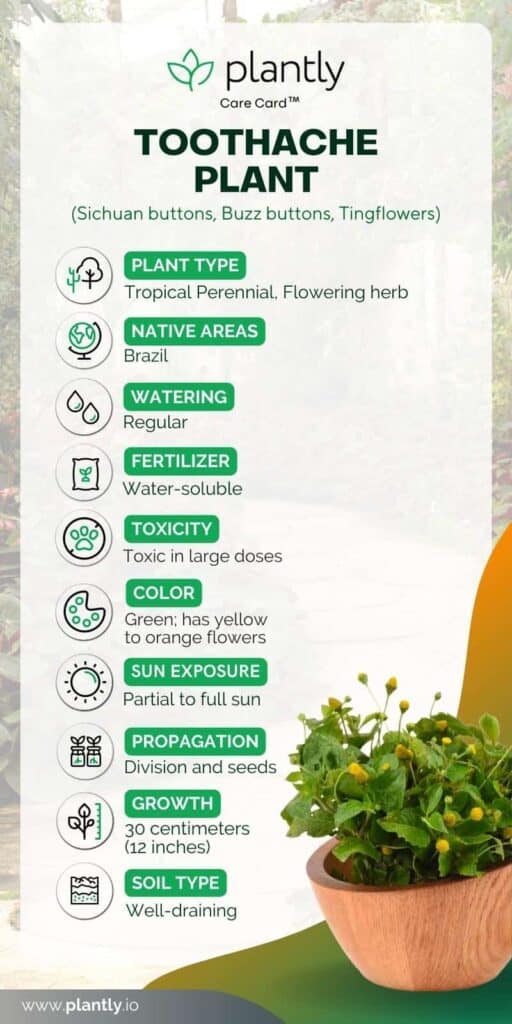
Toothache Plant Potting Mix
The Eyeball plant prefers to be placed in well-drained, slightly moist soil. Remember that being somewhat moist is different from being saturated. They also prefer a pH of 6.1 to 6.5 in the soil. Pro tip: Adding peat moss to the soil promotes good drainage.
Watering Spilanthes acmella
Water your plant regularly to maintain sufficient soil moisture during the growing season. But never let it sit in water. You can let the topsoil get a little dry in between watering. Reduce irrigation during the cold months.
The amount of water to use always depends on the season, the temperature, your environment, and the type of container it is in. The key is to be vigilant to your plant’s needs and give what it exactly needs.
Pro tip: If you’re growing them in the ground, run a soaker hose along a row of them and water them for a few minutes each day to keep them healthy.
Growing Spilanthes Lighting Needs
Spilanthes prefer to be in the sun. Therefore, you have to put it under full sunlight. However, it will require shade in tropical climates to avoid drying out too much. The Spilanthes plant can accept partial shade for a portion of the day in most settings, but anything less will make it unhappy.
Temperature & Humidity
Warm weather is ideal when growing Spilanthes. Planting temperatures should be between 65 and 85 degrees Fahrenheit (18.3 and 29.4 degrees Celsius).
Because Spilanthes is extremely cold-sensitive, avoid anything near frost and don’t even consider placing it outside during winter.
The Toothache plant loves high humidity, over 85%. And I know it isn’t easy to achieve this if you treat them as an indoor plant in the summer months.
But you can DIY it by putting a humidifier near the plant. You can even group plants, and the famous method – misting the plant.
Fertilizer
Avoiding fertilizer is the most critical step in caring for this herb. You don’t have to fertilize the Spilanthes acmella because it is a light feeder. To be exact, it’s unnecessary for the Toothache plant.
However, to ensure that the herb receives a boost of nutrients, you may add compost and any organic fertilizer around the base of the plant after planting.
Propagation
Now we are in the most exciting part of all: propagation! Yes, we will also teach you how to replicate this beauty. The Toothache plant is usually reproduced by seed. Follow the steps below on how:
Start your seeds six weeks before the last frost date if you want to start them indoors. Fill the grow trays halfway with excellent soil and two seeds in each cell. Because seeds require sunlight to sprout, don’t cover them with dirt until after germination.
Warmth and water are required for all seedlings until they are hardy enough to endure the weather. The germination rate should be improved by placing the tray in a warm location or on a grow mat.
When the fear of frost has passed, and the seedlings have two leaves per plant, it’s time to transfer it. When seedlings are also a few inches tall, thin to one plant every 6-12 inches apart. Remember to care for it as it is a new plant that will thrive and grow beautifully.
Growth Zone
The Toothache plant is hardy in USDA zone 9-11. Seeding outside may be easier for those in hot climates 8b and higher because the plant is a perennial.
Potting Spilanthes
Always use a container with suitable drainage holes when placing the Toothache plant. However, most people grow it in their garden bed, so they aren’t hassled when choosing a container or even when to repot it.
Pruning
You can prune the Toothache plant to maintain the correct size and shape. Pinched back growing tips to produce dense, bushy new growth and more flowers. Remove old blooms to keep the plant healthy and avoid seed production, which saps the plant’s energy and prevents fresh flowers from blooming.
Toothache Plant Varieties
Are you looking for another plant? Well, there are also other types, like this Toothache plant! They also come in a variety of colors and shapes. And I know they will catch your attention, and would love to have them all. They are:
Bullseye Toothache Plant
These funny tiny flowers, which have a bright bullseye on the apex of each petal, look excellent on a border, especially when planted in massive numbers. These blooms are as beautiful as they are powerful to look at.
Lemon Drops
Gumdrop-shaped flower heads in a bright, uniform yellow color. Flowers with a spicy, citrusy flavor can be used as a garnish over ice cream and cocktails. Container and bed plantings benefit from their full, mounding habit.
Toothache Plant Diseases & Pests
You’ll be relieved to learn that there are no diseases to be concerned about when growing this herb! Slugs are the only pests that could appear near your Toothache plant. Slugs are most active at dusk and eat holes in your plant’s leaves. If you notice them or have evidence of their nibbling, you have a few alternatives for resolving the issue.
You can spend time with your plant at dusk by plucking the slugs by hand as soon as they appear. However, suppose you don’t want to hand-pick bugs. In that case, you can sprinkle any brand of coffee grounds or diatomaceous earth around the plant’s base. I assure you that it is effective for shooing these pests.
Frequently Asked Questions
You can harvest the toothache plant once it reaches three inches in height. You can harvest the flowers and leaves. The blooms are used for fungal infections, bacteria, and viruses. While the leaves you can use as food in salads. You can use the plant’s leaves and flowers fresh.
These plants reach a height of 12 inches tall and even higher. They complement other plants in a garden with vibrant red-to-yellow blooms and foliage.
The Spilanthes are perennial in South America but are grown annually in other cooler regions.
In some climates, the Spilanthes can reseed as it is intolerant to cold, and you can see overwintered seed popping up in warmer temperatures.
You can propagate Spilanthes from stem cuttings by snipping off an eight-inch long stem portion with two leaves left at the top. Dip the cut end into a rooting hormone and insert it into containers filled with potting soil.
Seeds take up to seven days to sprout, and best to start them 6 weeks before the last frost and transplant them to the garden in early spring when the ground warms up.
Whether you want to buy, sell or simply reach out to other plant enthusiasts, Plantly is the right place to be!
-
$12.00Sold By: PotHedz Plants
In stock
Rhaphidophora tetrasperma ‘mini monstera’
Rated 4.96 out of 5 based on 106 customer ratings01Sold By: PotHedz Plants -
$4.50Sold By: Cacti and Exotica
In stock
Haworthia fasciata—Zebra Plant 2″ pot
Only 10 available and it’s in 2 people’s basketRated 4.98 out of 5 based on 59 customer ratings00Sold By: Cacti and Exotica -
$13.99Sold By: BubbleBlooms
In stock
Snake Plant
Only 998 available and it’s in 2 people’s basketRated 4.81 out of 5 based on 279 customer ratings03Sold By: BubbleBlooms -
$9.00Sold By: Cacti and Exotica
In stock
Haworthia retusa
Rated 4.98 out of 5 based on 59 customer ratings00Sold By: Cacti and Exotica
